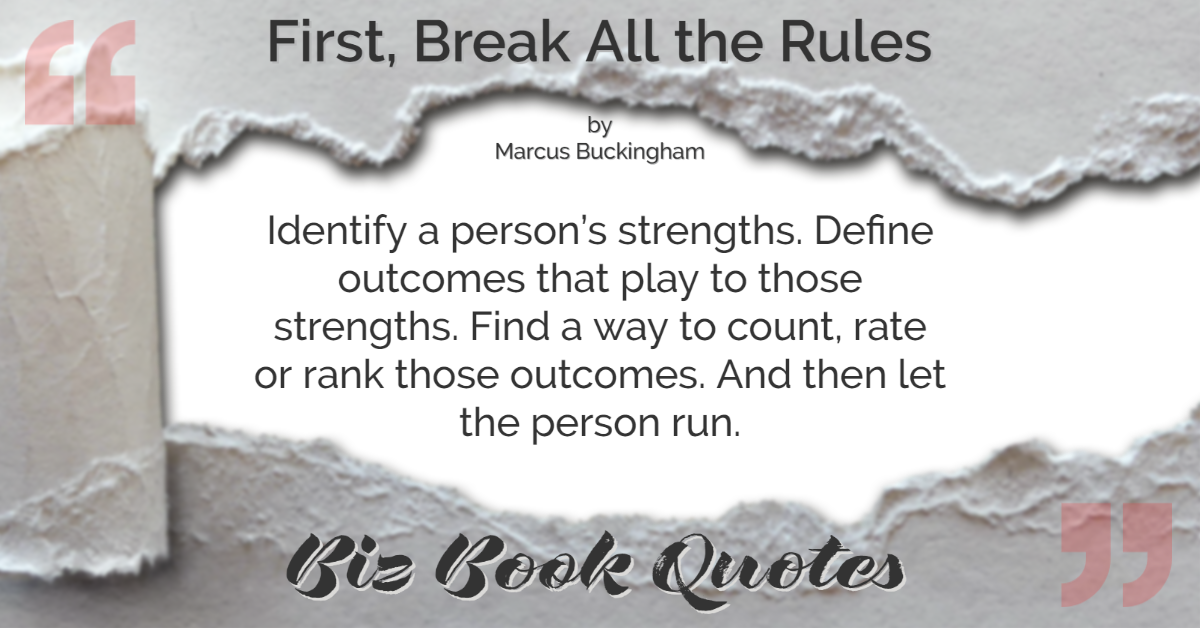 |
Identify a person’s strengths. Define outcomes that play to those strengths. Find a way to count, rate or rank those outcomes. And then let the person run.
|
147 |
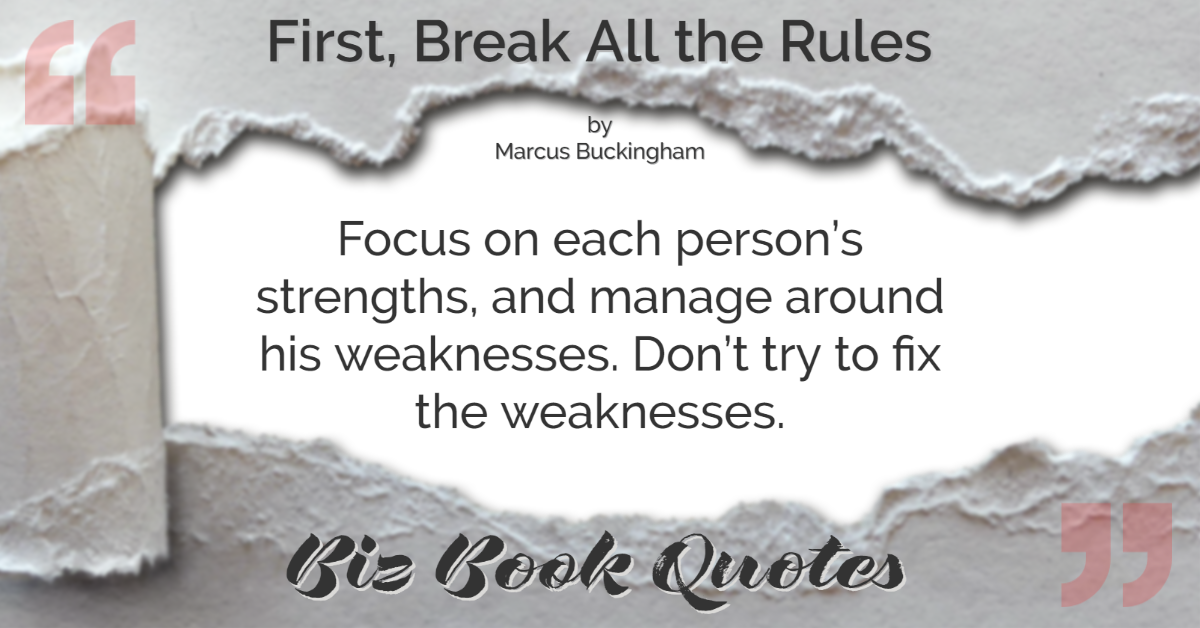 |
Focus on each person’s strengths, and manage around his weaknesses. Don’t try to fix the weaknesses.
|
153 |
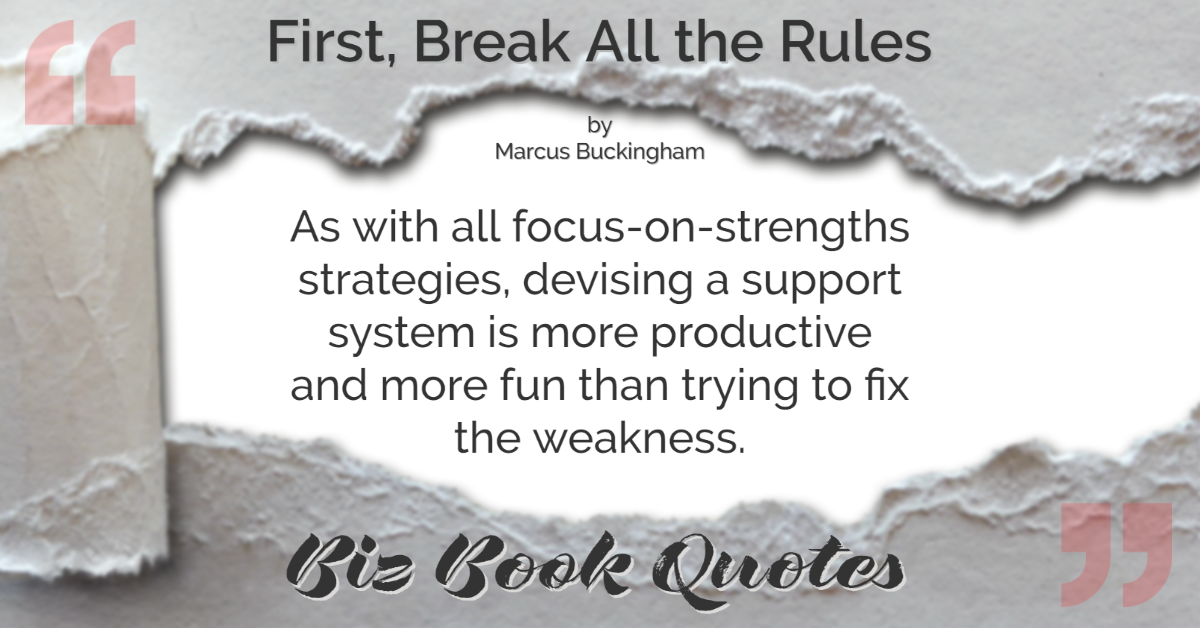 |
As with all focus-on-strengths strategies, devising a support system is more productive and more fun than trying to fix the weakness.
|
186 |
 |
Large-scale change does not happen well without a powerful guiding force. A fragmented management team cannot do the job, even if the individual members are strong people.
|
41 |
 |
…research shows that weaknesses never develop into strengths, while strengths develop infinitely.
|
18 |
 |
Offering strengths training shows you care about developing your employees and demonstrates that you’re interested in their long-term growth.
|
52 |
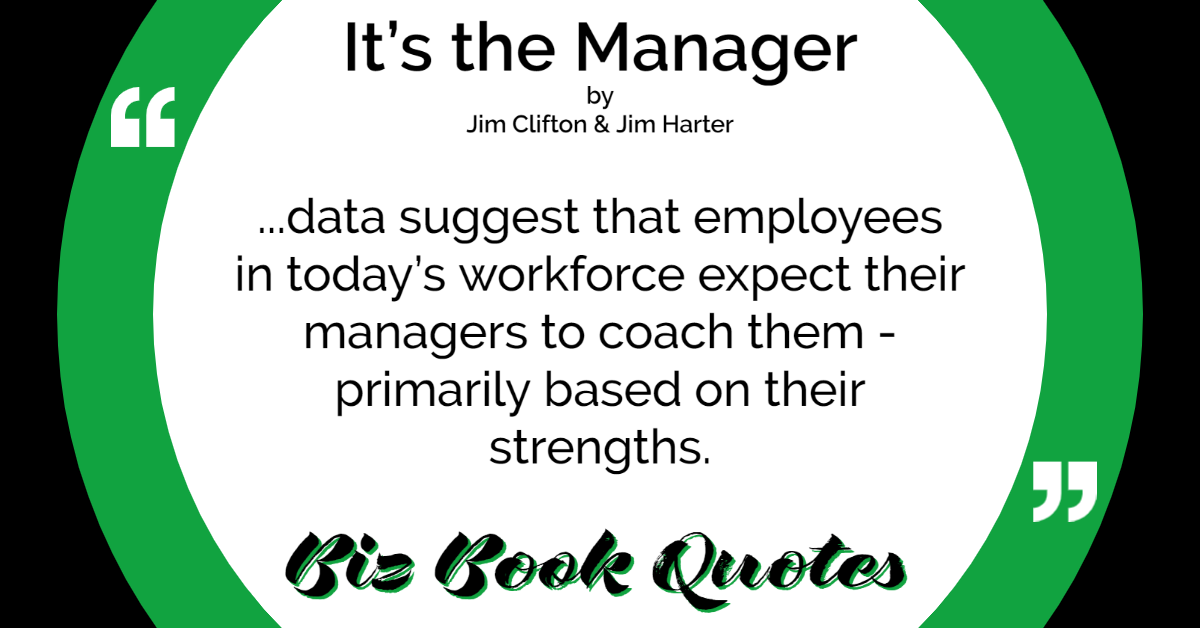 |
…data suggest that employees in today’s workforce expect their managers to coach them – primarily based on their strengths.
|
56 |
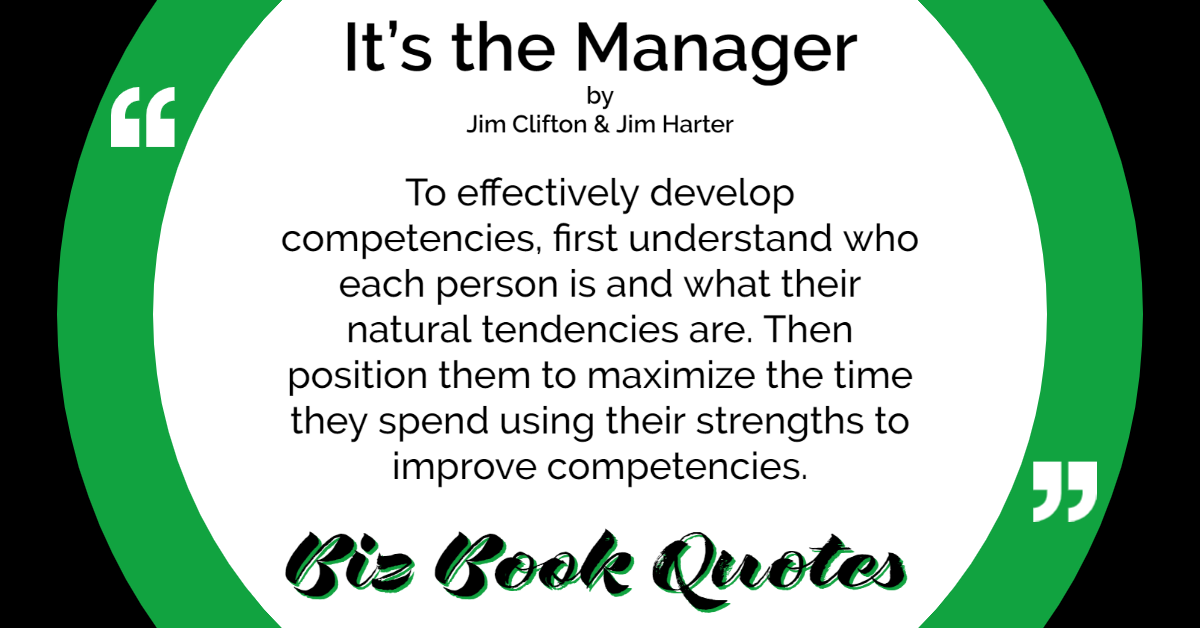 |
To effectively develop competencies, first understand who each person is and what their natural tendencies are. Then position them to maximize the time they spend using their strengths to improve competencies.
|
62 |
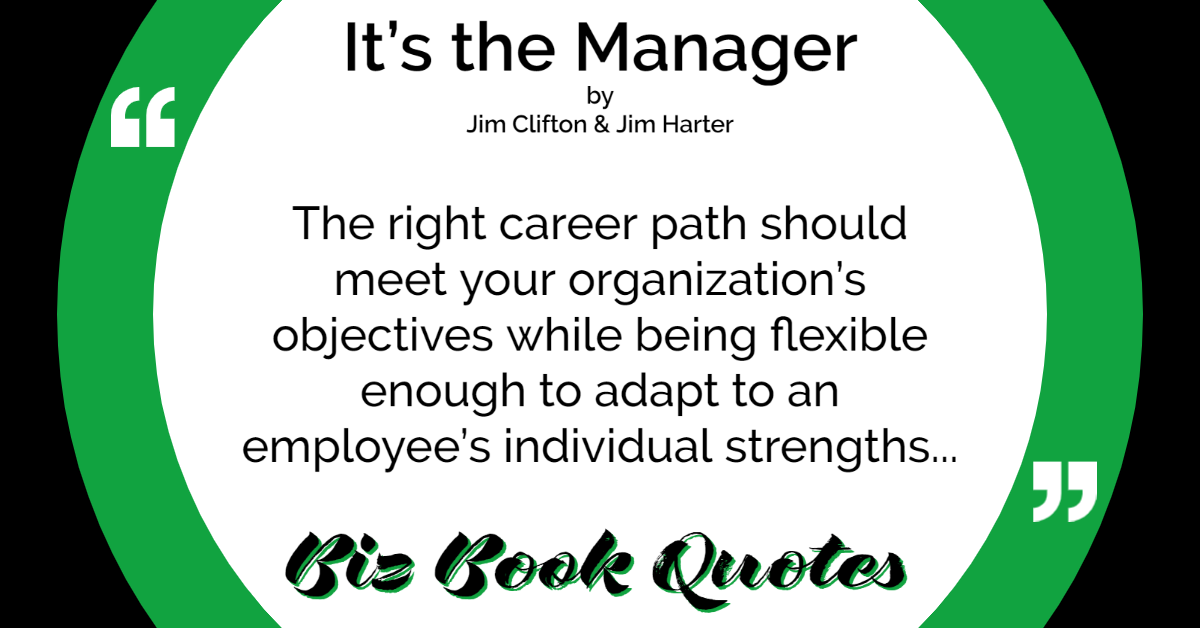 |
The right career path should meet your organization’s objectives while being flexible enough to adapt to an employee’s individual strengths…
|
99 |
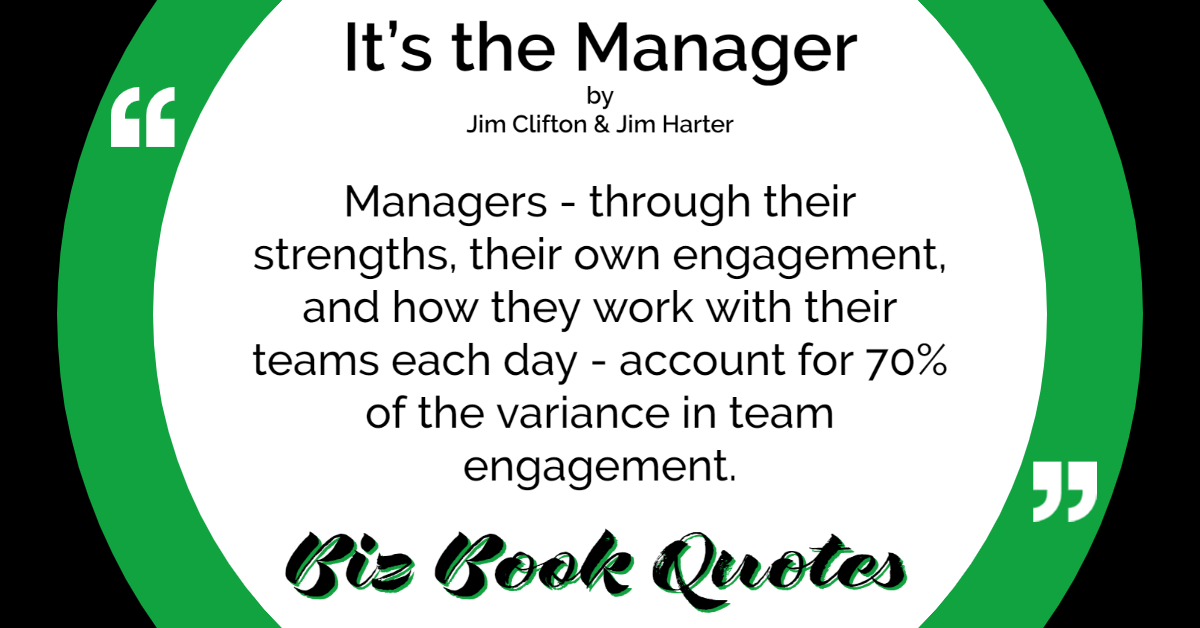 |
Managers – through their strengths, their own engagement, and how they work with their teams each day – account for 70% of the variance in team engagement.
|
105 |